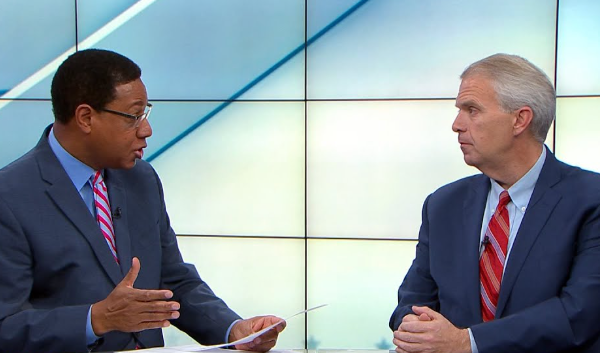Rick McLaughlin is the news director at WAPT-TV in Jackson, Mississippi. He has been part of Hearst Television since 2010 , having worked in Cincinnati and Orlando before his recent move to Jackson.
He says he learned to look at social media differently in the aftermath of the Pulse nightclub shootings in Orlando in 2016. McLaughlin says that, because his team discovered the event was trending on Twitter almost immediately, they were among the first reporters on site.
Not only did Twitter alert his station and the public to the shooting, but in the days following, McLaughlin says there was “an outpouring of compassion” on social media from both local and global communities. Twitter was keeping people informed, but it also allowed them to cope with the tragedy.
“It was a delicate situation,” he says. “We had to carefully craft our reports, but Facebook and Twitter communities were spaces for audiences to heal.”
Social media success is often tied to speed and immediacy, and that creates some real challenges for journalists.
“Social media has made it even more important for local news organizations to make sure that they’re getting everything right,” he says. “It has reinforced that credibility is our No. 1 priority.”
Despite his unwavering belief in local news, McLaughlin knows that the industry has to innovate: “I don’t think anyone has cracked this case yet, but we have to figure out how to make OTT and streaming work for local news. Our viewers—younger viewers especially—aren’t watching primetime television as much.”
Social media might play a role in solving this problem. “Whether viewers are tuning in to the news or not, they are most likely sitting in front of the television with their cell phones, or they might just be streaming directly from their phones,” McLaughlin says. “If someone were to get an alert on social media about upcoming stories on the news, he may be more likely to put the phone down and pick up the remote.”
Does social media drive people to turn on their televisions? McLaughlin thinks it may, but says it’s more of a relational instrument: “I do think it is a way for news organizations and reporters to build a following. It also allows us to connect with viewers in a way that hasn’t always been available to us.”
He also recognizes that new social media platforms continue to emerge so that requires keeping up with the “next big thing” and determining the news organization’s strategy within these platforms.
However, McLaughlin’s work throughout various communities has continued to confirm his belief in the power of local news.
“Local news is still the most trusted news authority. Viewers feel like they know their local reporters and they feel like these reports are unbiased,” McLaughlin says. “It is still the No. 1 place viewers go when they want to know what is happening in their world.”








